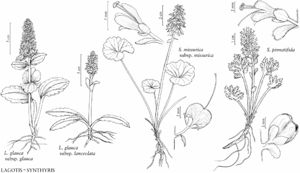familyPlantaginaceae
genusSynthyris
speciesSynthyris missurica
subspeciesSynthyris missurica subsp. missurica
Difference between revisions of "Synthyris missurica subsp. missurica"
Selected by author to be illustratedEndemic
FNA>Volume Importer |
FNA>Volume Importer |
||
| Line 49: | Line 49: | ||
|publication year= | |publication year= | ||
|special status=Selected by author to be illustrated;Endemic | |special status=Selected by author to be illustrated;Endemic | ||
| − | |source xml=https://jpend@bitbucket.org/aafc-mbb/fna-data-curation.git/src/ | + | |source xml=https://jpend@bitbucket.org/aafc-mbb/fna-data-curation.git/src/f6b125a955440c0872999024f038d74684f65921/coarse_grained_fna_xml/V17/V17_727.xml |
|genus=Synthyris | |genus=Synthyris | ||
|species=Synthyris missurica | |species=Synthyris missurica | ||
Revision as of 19:31, 24 September 2019
Leaves 35–80 mm during flowering, margins regularly toothed. Racemes to 20 cm at end of flowering, longer in fruit, usually 12–35-flowered. Ovaries sparsely hairy, especially along margins. Capsules glabrescent.
Phenology: Flowering late Mar–Jul; fruiting Apr–Aug.
Habitat: Moist forests.
Elevation: 300–2900 m.
Distribution
Calif., Idaho, Mont., Oreg., Wash.
Discussion
Selected References
None.
Lower Taxa
None.
